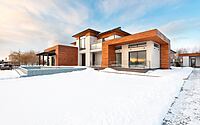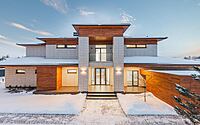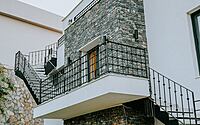Elevate Your Home’s Look – The 7 Popular External Cladding Options in the UK
One way to improve the appearance of your home’s exterior is through wall cladding. Exterior cladding design has evolved in tremendous ways in the last ten years. There was a time when brick was regarded as the most important building material. However, today, there have been improvements in production techniques, which have opened up routes for a wide range of design options.
This implies that building contractors, homeowners, and architects now have numerous materials to choose from. Today, selecting the right material is hassle-free and can add beauty to how your property looks.
In this article, we will analyse the 7 best external cladding options for your residential project in the UK.
Brick Slip
Brick slip cladding is a great option for your residential project. This is because it offers a genuine brick appearance and texture. Furthermore, there are other advantages that this material has over traditional bricks, like longevity and superior moisture resistance when used in some situations.
Because of their elegant appearance, brick slips are becoming a favourite of many UK-based homeowners. They can be designed to imitate vintage stone masonry buildings from decades past. You can easily combine them with modern design features, such as metallic window frames and sleek white coatings.
Composite Cladding
Widely used in the UK market, composite cladding provides a beautiful home exterior without high maintenance. There are nearly unlimited options to select from, with several suppliers providing quality composite cladding in the UK. You will have no problem finding a wide range of colours and finishes available to suit the aesthetics of your home.
Composite claddings are designed to imitate the appearance of timber and wood. This is an important benefit because it allows you to enjoy the beauty of authentic timber cladding without the hassle of upkeep.
Today, many composite products come with warranties of over 10 years against warping, pest attack, and gradual decay, which is much better than what timber cladding can provide.
Aluminium Cladding
Another amazing option for modern buildings in the UK is aluminium cladding. It is very versatile and lightweight. Aluminium cladding provides you with an array of design options through the use of several finishes you can apply. For instance, there is the powder-coated, stone, and anodized effect.
One of the most popular choices for modern facades is aluminium cladding. Naturally lightweight and very adaptable, aluminium cladding opens up several design options as different finishes can be applied, such as anodised, powder-coated, and even stone effects.
Unique cladding styles can be created through the extrusion of aluminium, which can further enhance its curb appeal and aesthetic quality.
The fact that aluminium is recyclable establishes it as a prime choice for creating a lasting building structure in the UK. Today, the construction sector is experiencing growing concerns about sustainability, which implies that the choice of eco-friendly cladding material is extremely important.
Timber Cladding
Timber cladding is known for its versatility. It is the key to creating amazing exteriors for your building projects
There are many varieties of timber cladding in the United Kingdom. They include European redwood, western red cedar, Siberian larch, and British larch.
Timber cladding is sourced from trees like oak, larch, western red cedar, sequoia, and much more. Since the cutting down of trees is involved in the production stage, it is not an eco-friendly option.
However, it is important to understand that to retain the beautiful look of timber, you will need to invest time and resources in maintaining it. You will have to frequently paint the timber to mitigate the effects of fading and discolouration. Timber is also prone to decay, pest and rodent infestations, and warps.
Stone Cladding
Stone cladding is the oldest type of cladding. Historically, British monarchs used stones to fortify their buildings and city walls.
Stone is traditionally utilised in a three-dimensional framework, which also impacts the structural integrity of the building. Now, years of technological change have enhanced the quality of stone cladding. With the emergence of innovative tools, manufacturers can easily trim, shape, sculpt, finish, and paint stone using techniques that didn’t exist in earlier years.
Stone cladding has a regal look that is hard to imitate with synthetic materials. With the passage of time, each component can acquire different colours as a result of changes in the processes that occur in the formation process.
Perforated Cladding
While perforated cladding is unique and not as popular as other cladding options, it can easily captivate passersby. It can give your property a distinctive look. Its utility goes beyond its attractiveness, as perforated cladding allows builders to address safety and visibility concerns, especially its ability to withstand fire.
If you are looking for something you can easily tailor to your home’s aesthetics, perforated cladding is highly customisable. This means it can suit buildings of varying sizes and designs
Fibre Cement Cladding
Fibre cement cladding is another widely used option for cladding building structures in the UK. Invented in the late 19th century and true to its name, fibre cement cladding is manufactured with cement, which is strengthened by cellulose fibre and combined with water and sand. The end product is a resilient cement board, which features a wood grain texture on the outer surface of the board, making it a good external cladding option.
Conclusion
In this article, we explored the seven popular external cladding options for residential projects in the United Kingdom. Cladding materials are unique and have tremendous benefits for your building, including longevity, safeguarding the structure of the building, and visual impact.
- by Matt Watts


